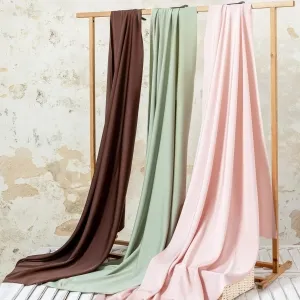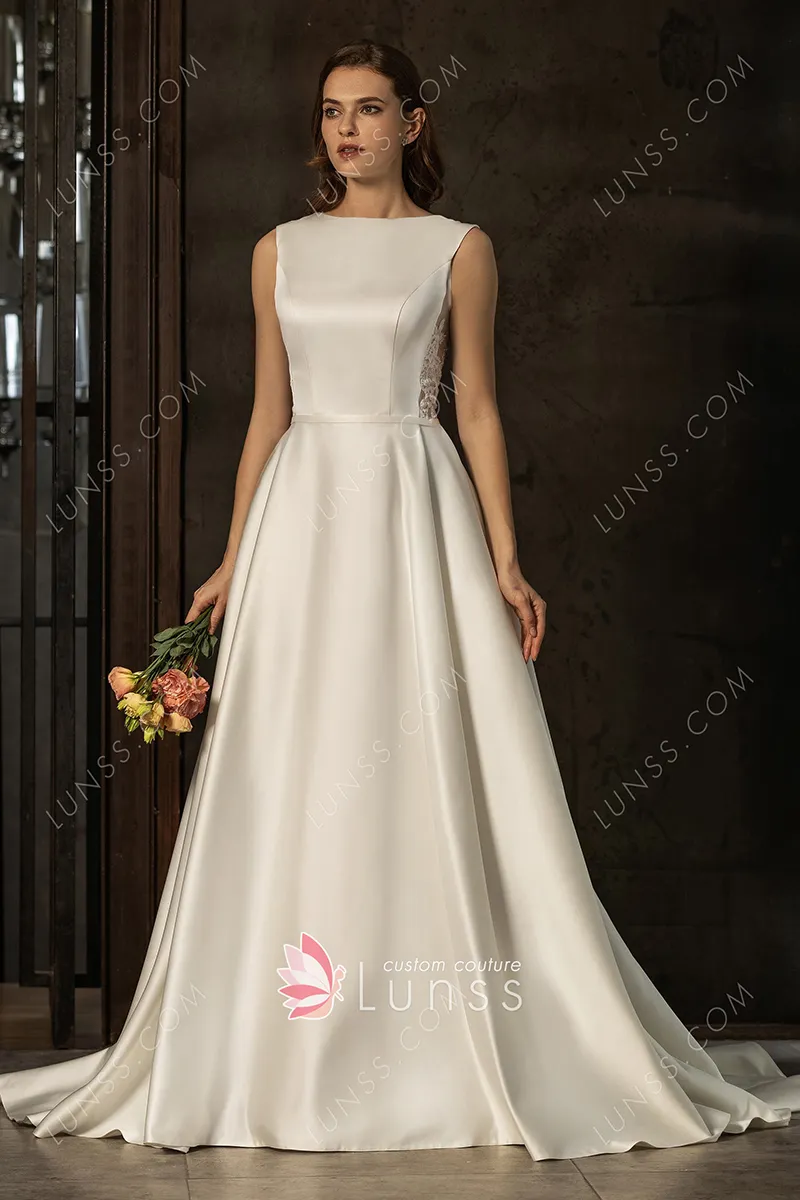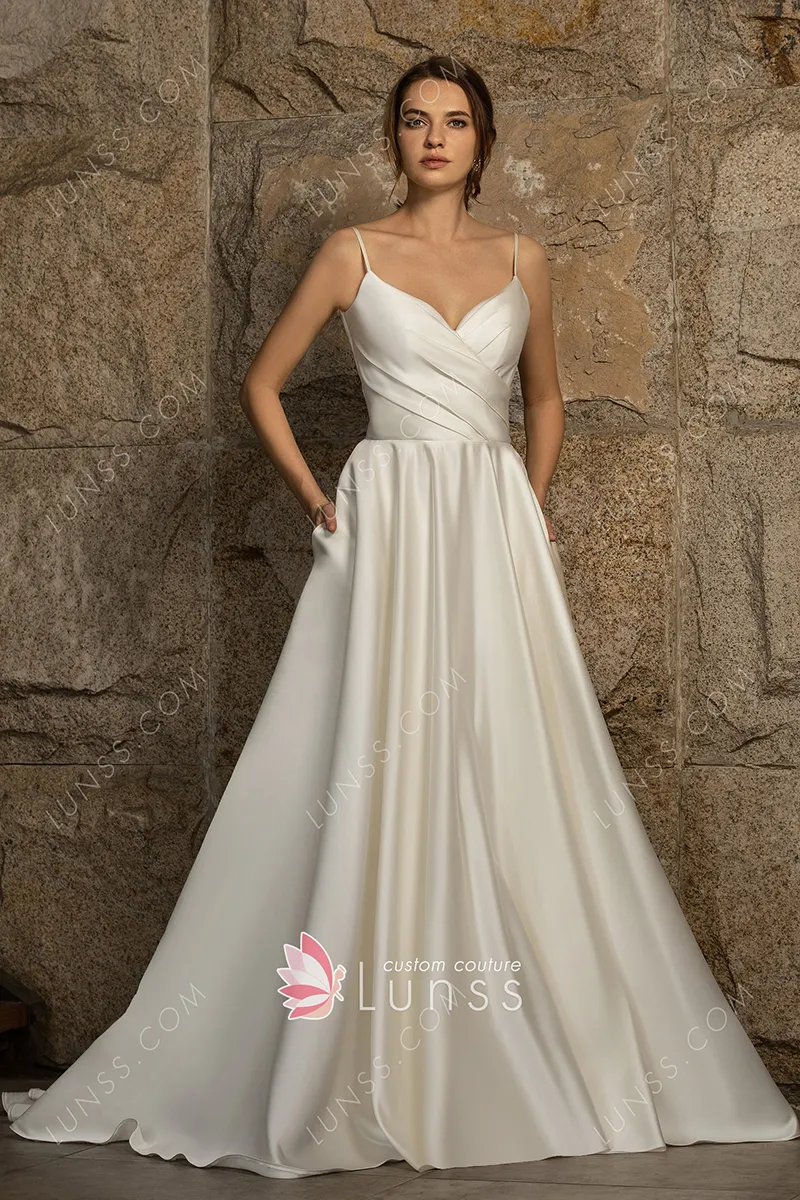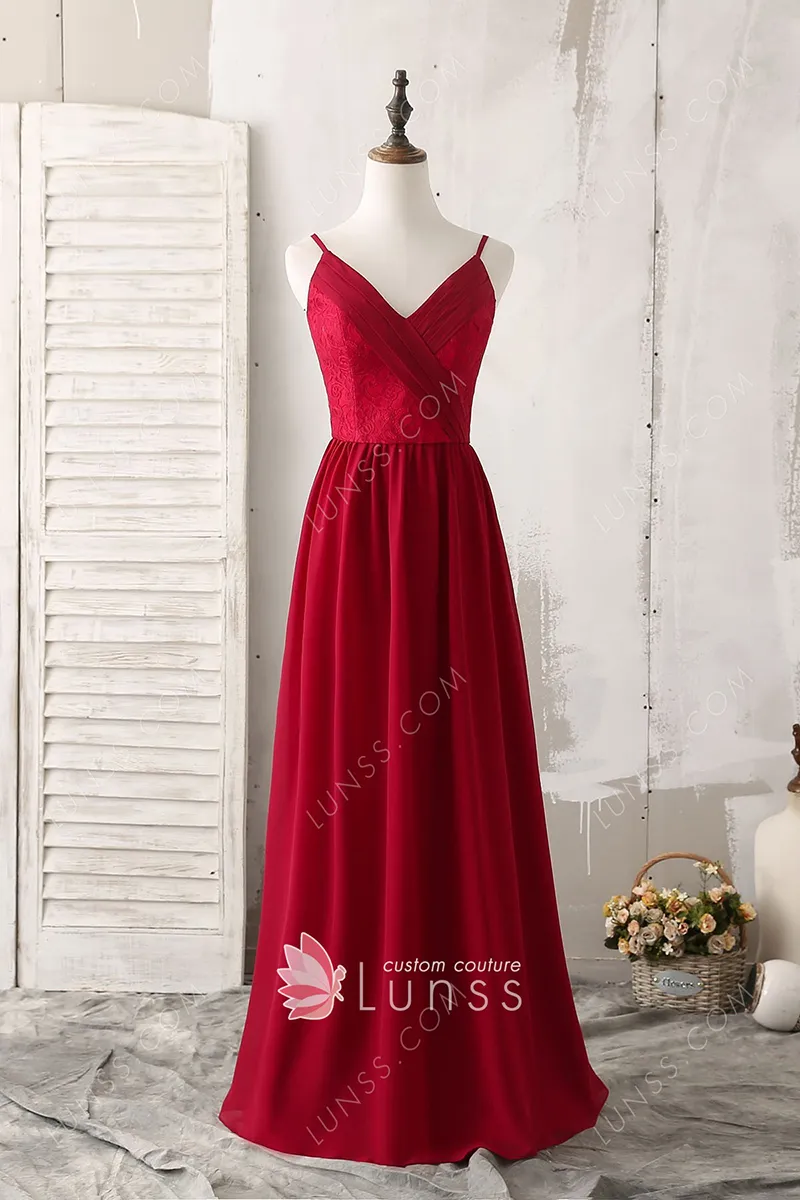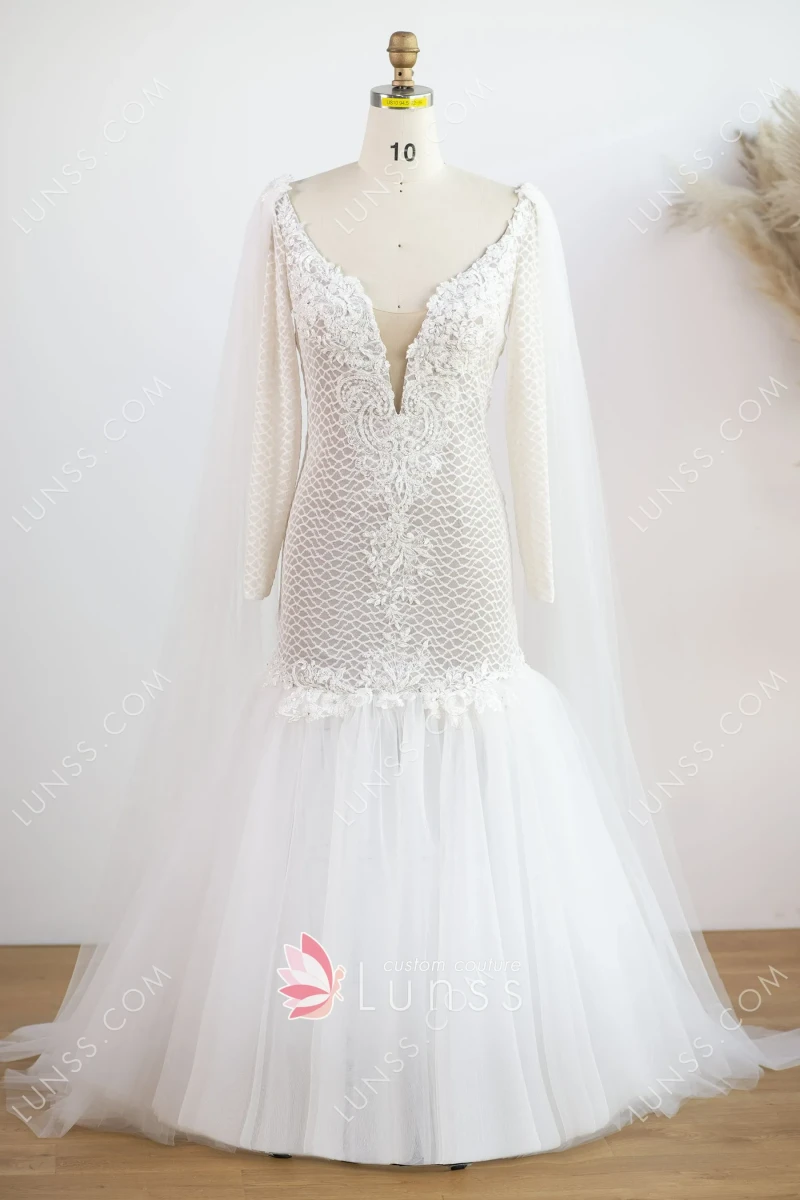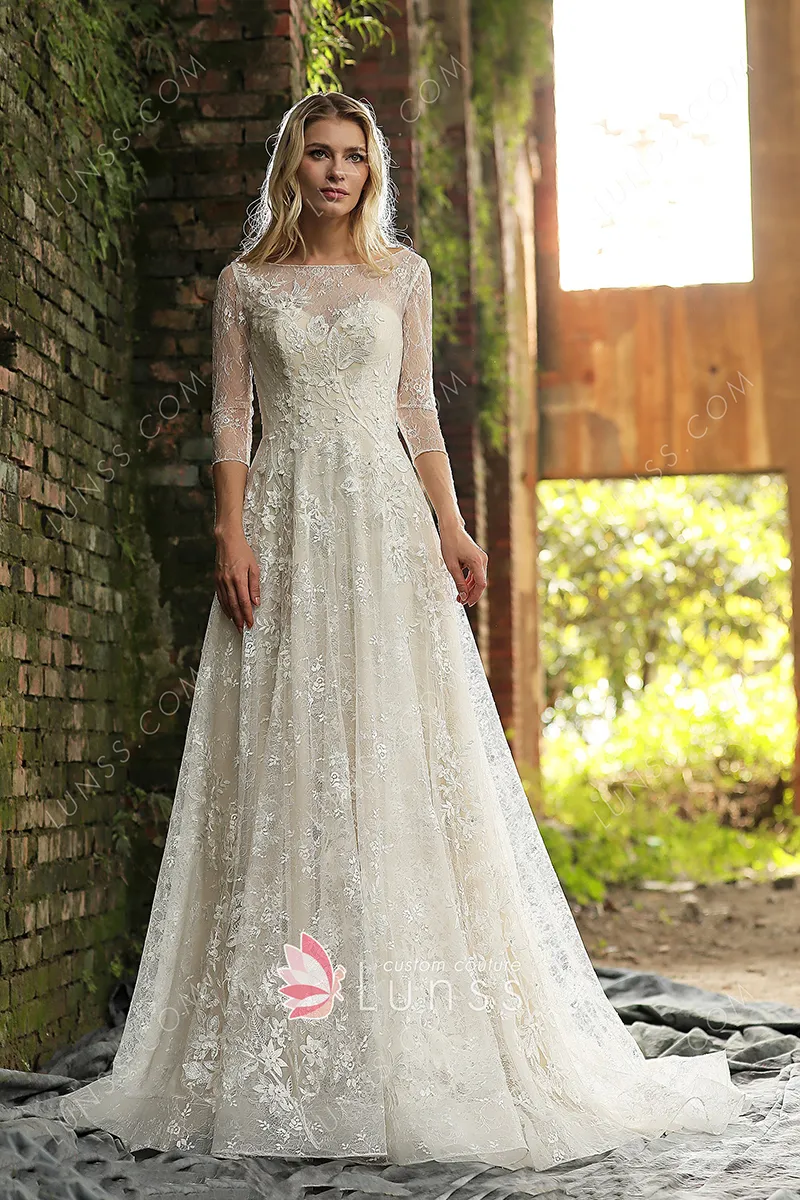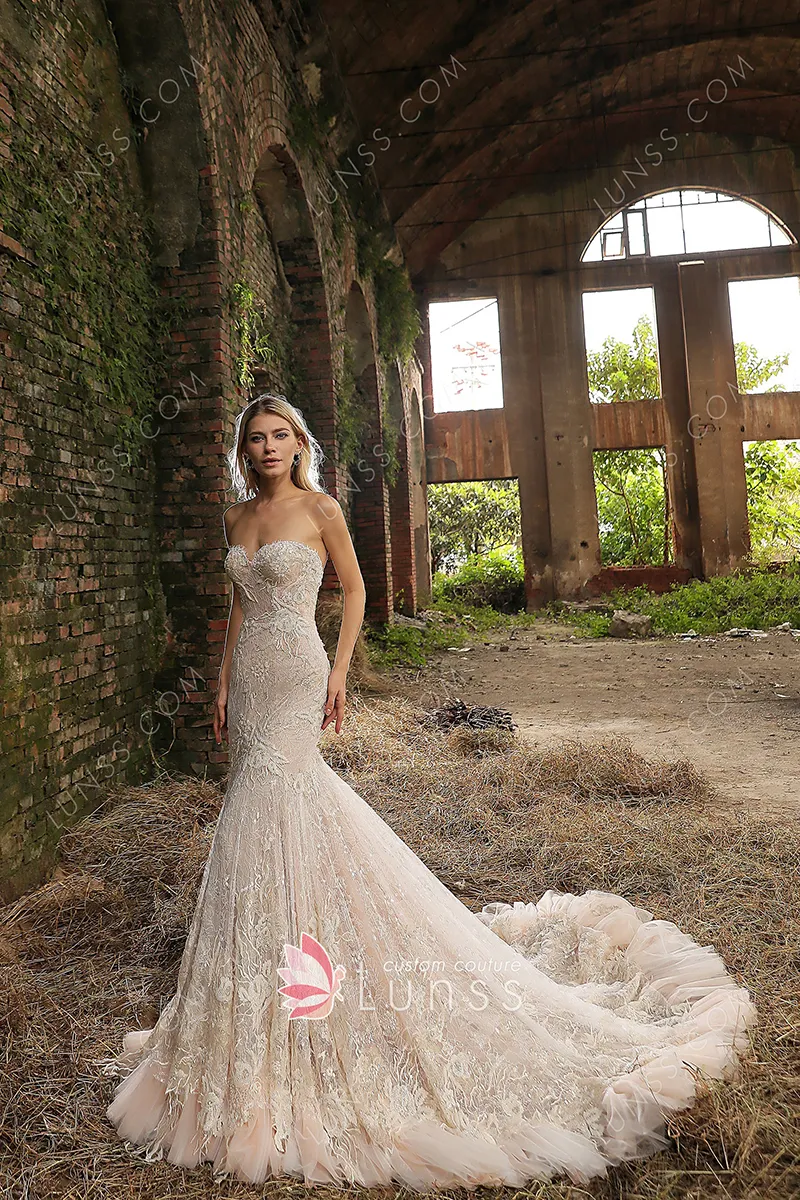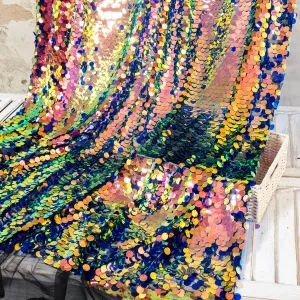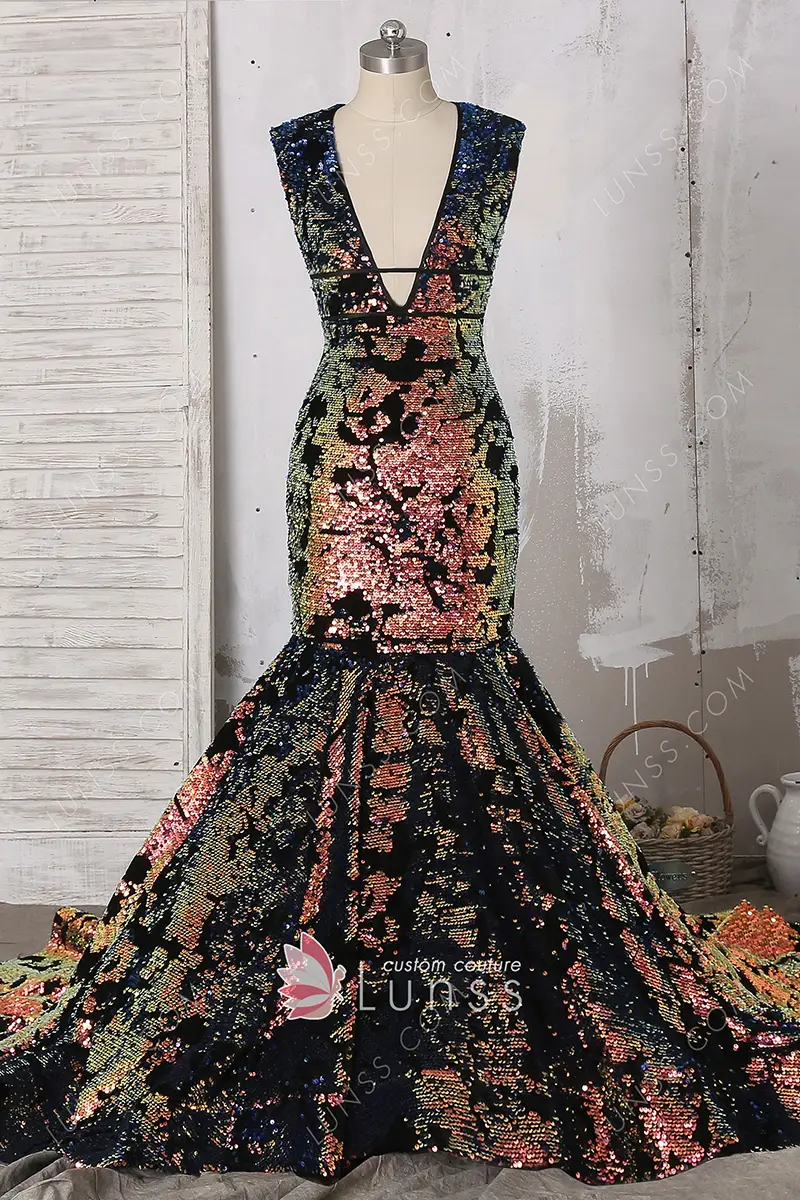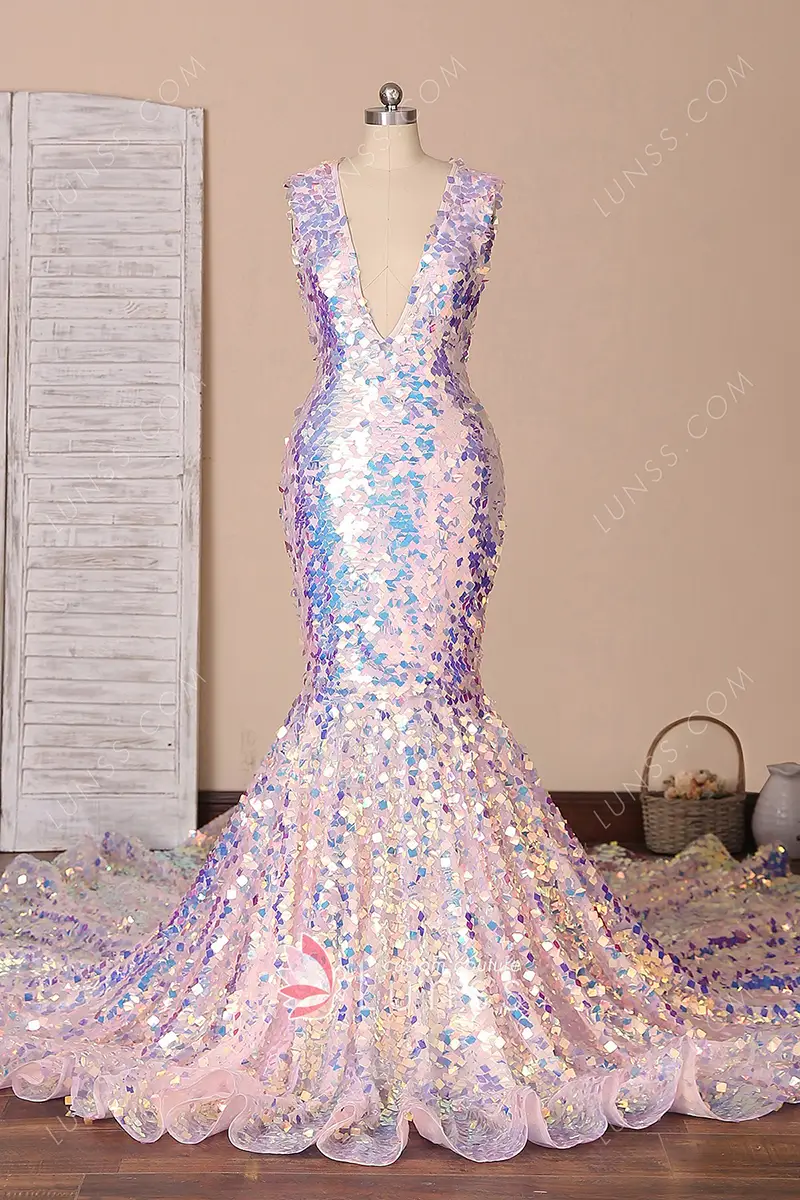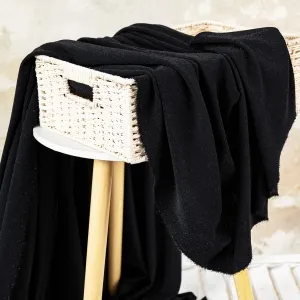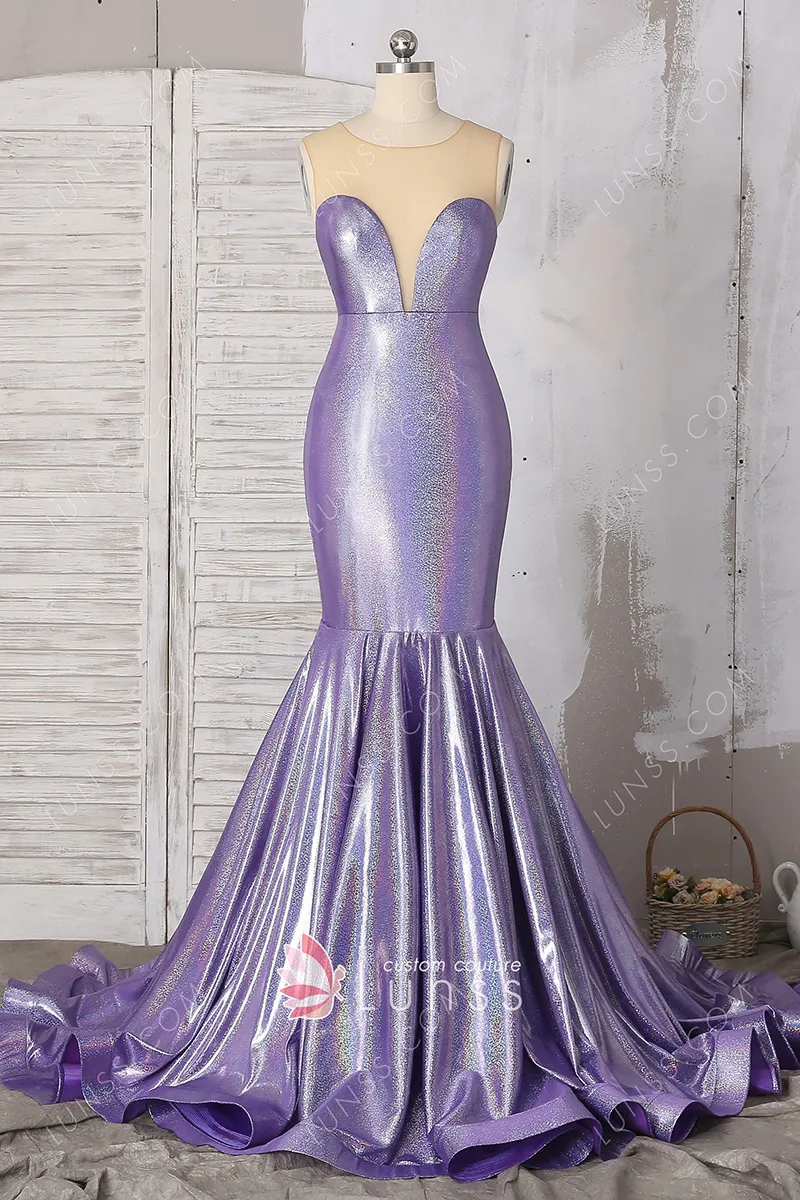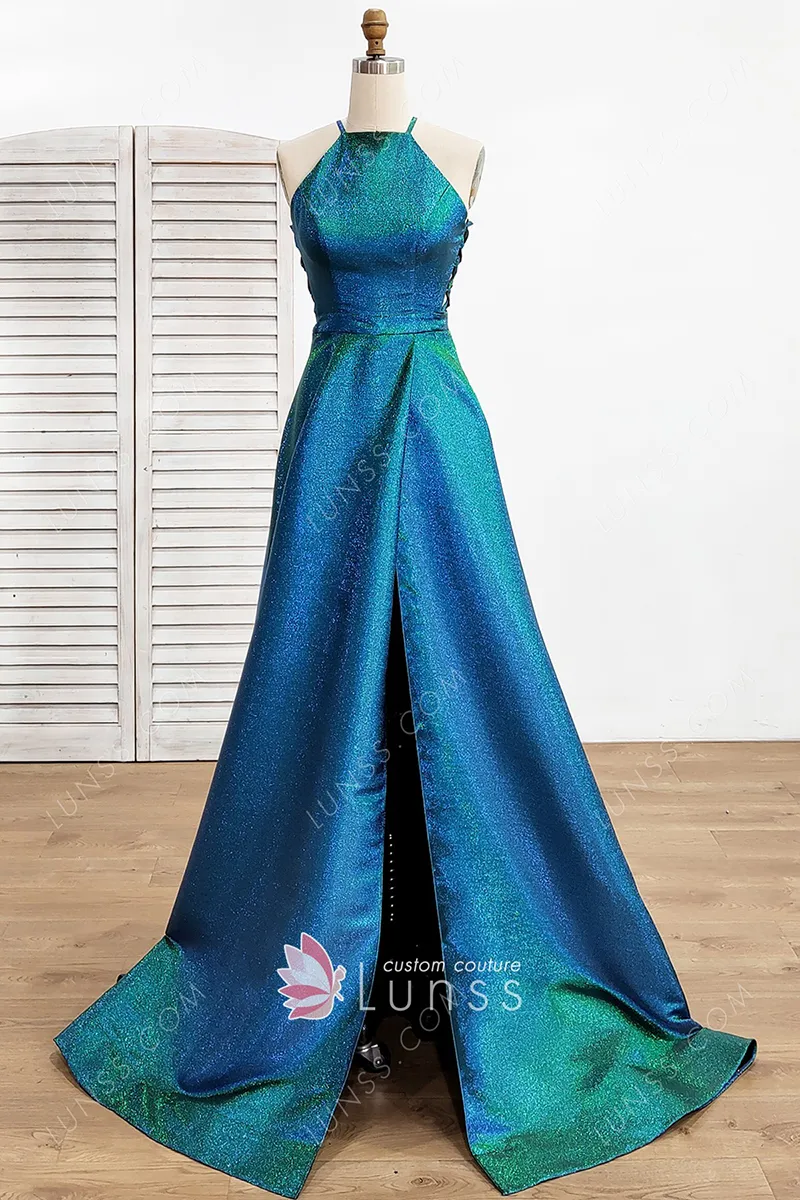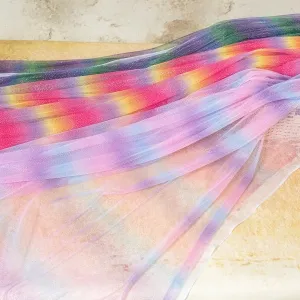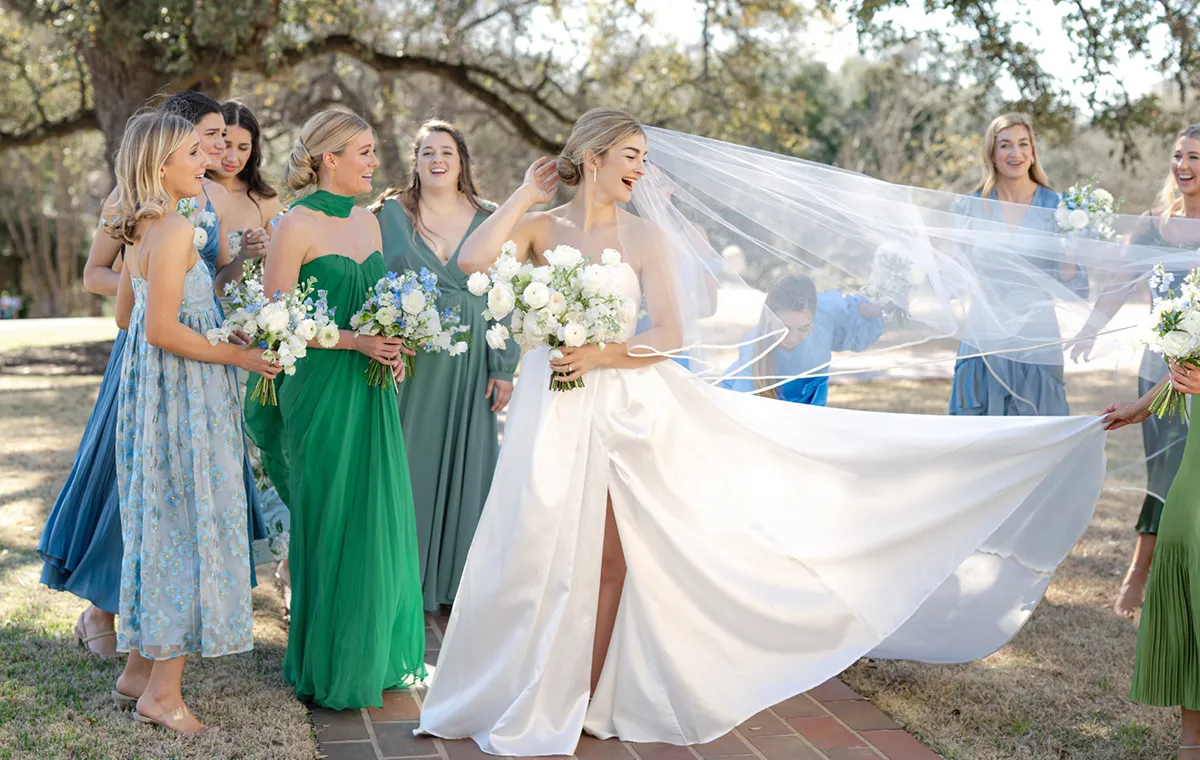Dressmaking is a fun and rewarding hobby, but choosing the right fabric for your project can be overwhelming. With so many different types of fabrics available, it's important to understand the key factors that go into choosing the perfect fabric for your dressmaking project.
Dressmaking fabrics are either woven or knitted, and can be made from silk, nylon, polyester, spandex, rayon, and more. Fabrics produced by different materials and manufacturing processes will have different luster, thickness, texture, and elasticity. Let's take a look at the types of bridal and special occasion dress fabrics, and how to choose the right fabric for you.
Commonly Used Fabrics for Dresses
1, Satin Fabric

Satin is a smooth, glossy fabric that is made from silk, polyester, or a blend of the two fibers, with its luxurious and elegant appearance, is usually the fabric of choice for formal wear and special occasion dresses. It is commonly used in wedding dresses, evening gowns, and lingerie. Satin is also used in bedding and home decor, as it has a smooth and silky feel that adds a touch of sophistication to any space.
One of the standout characteristics of satin is its ability to reflect light. This quality gives satin its distinctive shine, which makes it a popular choice for party dresses and bridal gowns that are meant to catch the eye. Additionally, satin is a relatively sturdy fabric, making it a good choice for garments that will be worn frequently.
Despite its many advantages, satin does have some drawbacks. It is a relatively delicate fabric and can be easily damaged by rough handling or washing. Satin also tends to wrinkle easily, so it may require regular ironing to maintain its smooth appearance.
Satin dresses can come in a variety of styles, from simple and classic designs to more modern and fashion-forward pieces. They are often adorned with intricate embellishments such as beading, lace, or embroidery, which adds to their overall glamour and sophistication. Overall, satin dresses are the perfect choice for anyone looking to make a statement and feel like a true fashionista on their prom night or wedding day.
2, Chiffon Fabric

Chiffon is a type of sheer, lightweight fabric that is often used in the fashion industry to create elegant and ethereal evening wear, especially as an overlay. One of the most unique features of chiffon is its transparency, which allows it to drape beautifully and gives dresses made from this fabric a dreamy, romantic look. It is also highly versatile and can be used to create a wide range of clothing styles, from formal evening gowns to casual blouses and skirts.
Despite its delicate nature, chiffon is a durable and long-lasting fabric that can withstand regular wear and tear. It is also resistant to wrinkling and static, which makes it a great option for clothing that needs to maintain its shape and appearance.
Chiffon dresses are typically made from a sheer, lightweight fabric called chiffon, which is known for its delicate texture and flowing drape. Chiffon dresses are the perfect choice for anyone looking to make a statement and feel elegant and graceful on their special day.
3, Tulle & Netting Fabric

Mesh and tulle netting fabric are characterized by their open, airy weave. Tulle mesh is a lightweight, stiff, fine netting fabric that has small holes or openings throughout the fabric and is often made from nylon or silk, or polyester, and is commonly used in wedding dresses, veils, and ballet tutus. Tulle is often used as an accent, to create a lacy, floating look. Tulle may also be used in underskirts or petticoats to create a stiff belled shape. Gowns are often puffed out with the use of several layers of stiff tulle. Tulle netting is also used to make veils since it obscures the features of the face while allowing the wearer to see out.
Tulle is often used to make wedding dresses and other formal gowns because of its delicate, airy appearance. Tulle dresses are known for their graceful, romantic look, and are often worn to proms, dances, and other special occasions. The fabric is typically used to create full skirts and billowing sleeves, adding a touch of whimsy and elegance to the garment. Many tulle dresses are adorned with lace, sequins, or other embellishments to give them a touch of sparkle and glamour. Overall, tulle is a versatile fabric that can be used to create beautiful and feminine dresses.
4, Lace Fabric

Lace fabric is a delicate, openwork fabric that is characterized by its intricate patterns and decorative details. It is made by interlocking threads using a variety of techniques, including needlepoint, knitting, and crocheting. Lace has a long history and has been used in a variety of applications, including clothing, lingerie, and home decor. In fashion, lace is often used to add a feminine and elegant touch to garments, particularly dresses, skirts, and blouses.
Lace dresses can range in style and design, from romantic and feminine to sleek and modern. Lace can range in weight, texture, and transparency depending on the specific fibers and construction of the fabric. Lace dresses can be worn for a variety of occasions, including formal events, weddings, and casual events, and they can be dressed up or down depending on the specific garment and the accessories paired with it. Lace dresses are a popular choice for women who want to add a touch of sophistication and femininity to their wardrobe.
5, Metallic Sequin & Glitter Fabric
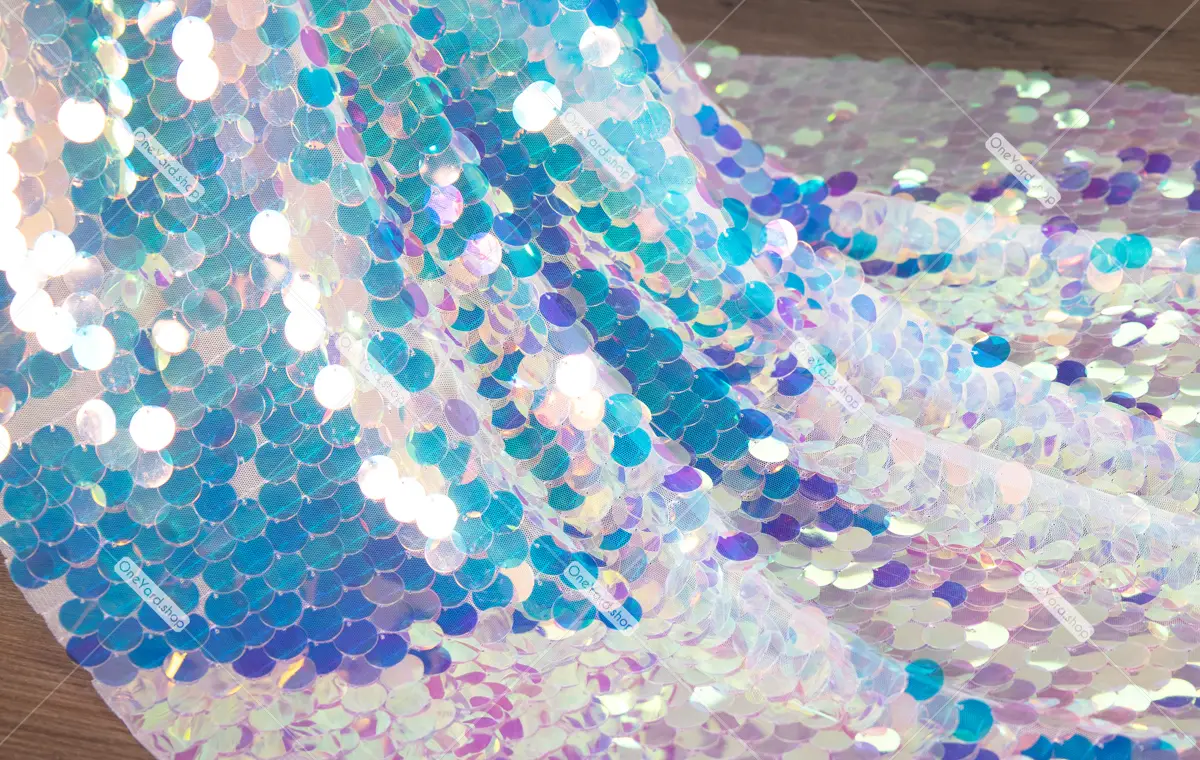
Metallic sequin and glitter fabrics are a type of decorative fabric that adds a touch of glamour and sparkle to any garment or accessory. These fabrics are made by attaching small, shiny metallic discs or tiny pieces of reflective material to a fabric base, creating a shimmering, eye-catching fabric that is perfect for adding a bit of drama and sparkle to evening wear, prom dance dresses, and other special occasion garments. There are many different types of metallic sequin and glitter fabrics available, including 3mm solid sequins, ombre sequins, iridescent sequins, lurex fabric, foil, and reflective materials, and they can be used in a wide range of applications and sewing projects.
Sequin dresses are often associated with formal occasions, such as proms or black tie events, but they can also be worn for more casual occasions, depending on the style of the dress. Sequins can come in a variety of colors and finishes, from metallic gold and silver to iridescent pastels, and can be used to create intricate patterns or solid blocks of sparkle. Whether you're looking for a flashy statement piece or a more subtle hint of shimmer, a sequin dress is a fun and eye-catching choice for any occasion.
6, Jersey & Spandex Fabric

Jersey is a knit fabric used predominantly for clothing manufacture. The fabric can be a very stretchy single knitting, usually lightweight, jersey with one flat side and one piled side. Or it can be a double knitted jersey (interlock jersey), with less stretch, that creates a heavier fabric of two single jerseys knitted together to leave the two flat sides on the outsides of the fabric.
Spandex fabric, also known as lycra or elastane, is a synthetic fiber that is known for its high level of elasticity and stretch. It is often blended with other fabrics, such as cotton or polyester, to create garments that have a stretchy, form-fitting silhouette. Jersey and spandex fabric are often used together in the construction of leggings, tights, and other activewear, as the combination of the two fabrics creates a comfortable, stretchy garment that moves with the body.
7, Embroidery Floral Fabric

Embroidery floral fabric is a type of fabric that features a pattern of embroidered flowers or other patterns such as butterflies, plants, stars, and more. This type of fabric is often used in dressmaking, home decor items, and other decorative projects. The fabric may be made from a variety of fibers, including cotton, linen, silk, and wool, and the embroidery may be done using a variety of threads, such as cotton, silk, or metallic. The flowers on embroidery floral fabric may be highly detailed and realistic, or they may be more stylized and abstract. The fabric may also feature other decorative elements, such as leaves, stems, and vines, in addition to the flowers. Embroidery floral fabric is a popular choice for garments, particularly dresses and tops, as the embroidery adds a decorative touch to the fabric. It is also commonly used in the construction of home decor items, such as pillow covers and curtains.
8, Lurex & Lame Fabric

Lurex fabric and lame fabric are a type of fabric that is characterized by their metallic sheen or shimmer. It is made from a blend of fibers, typically a synthetic fiber such as polyester or nylon, and a metallic fiber, such as gold or silver. The metallic fibers are typically very thin and are woven or knitted into the fabric in a way that creates a shimmering or iridescent effect.
Lurex fabric and lame fabric are often used in the construction of garments, such as tops, skirts, and dresses, as well as accessories, such as bags and shoes. It is a popular choice for evening wear and special occasion dresses, as the metallic shine adds a touch of glamour and sophistication to the garment. They are also commonly used in the construction of home decor items, such as curtains and upholstery, to add a touch of shimmer and shine to the space.
Where to Buy Fabrics Online?
There are many websites where you can buy fabrics online. Some popular options include fabric.com, joann.com, oneyard.shop, and moodfabrics.com. In addition, many independent fabric stores and craft stores have websites where you can purchase fabrics online. It's also worth checking out the websites of major department stores and home goods stores, as they may have a selection of fabrics available for purchase online. Finally, you can try searching for specific fabrics or fabric stores on search engines like Google to find additional online options.

 Best
Best  New
New  Featured
Featured  Featured
Featured 

